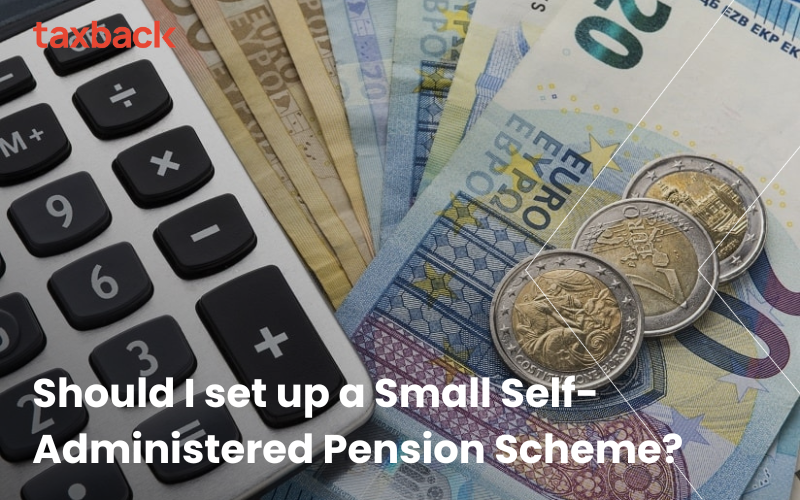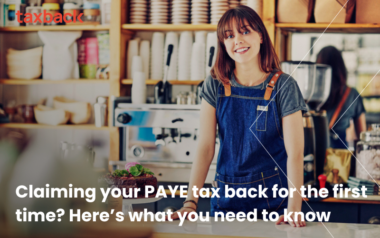There are lots of misconceptions about Small Self-Administered Pension Schemes (SSAS) and what they do and don’t do.
With this in mind, Paddy Delaney, Creator & Director at Informed Decisions is here to answer some of the most common questions regarding SSAS.
What is a Small Self-Administered Pension Scheme?
A Small Self-Administered Pension Scheme (SSAS) is a pension which has a small number of members and is self-administered.
This type of Occupational Pension is most often set up for a single Director of a Limited Company and contributions are invested as per the wishes of the Director, and in line with pension rules.
Who can set up a Small Self-Administered Scheme?
While this type of pension is usually associated with company Directors, technically anybody can set up a SSAS.
However, whether or not this type of pension scheme will be of benefit to you depends largely on your personal circumstances.
Typically it is directors of businesses that opt to establish such schemes as a way to fund their retirement income and to control how, what and when they invest the funds. It is run by the director/employer and not by a traditional pension provider. It is an alternative strategy to traditional pension products and one that is quite attractive to many.
What is involved in an SSAS?
If you open an SSAS you are obliged to hire an independent Trustee to have official over-sight of the scheme and to ensure timely annual reporting. You must also behave in line with the relevant legislative guidelines.
There are two platforms available in Ireland that allow access to low-cost index funds through such schemes. You can also use traditional brokerages and companies to invest in funds or funds of funds. You can also then invest in property directly, be that residential or commercial properties.
Legislation governs how and what you can do in this regard. You may also likely opt to work with an advisor to help you determine an overall strategy, to execute the strategy and then to monitor and manage it over the long term.

Will I have to pay any fees?
Yes. You will have to pay your Trustee, fund platform/vehicle and your advisor. Fees can range from as low as 1% on such structures to as high as 4%. Ultimately how much you will have to pay will totally depend on the amounts, the parties you engage and the strategy you adopt.
For example, when it comes to Trustees, some might charge a flat fee of €3,000 – €5,000 per year, while others might charge 0.2% – 0.5% of your funds.
What are the advantages of setting up an SSAS?
There are many advantages to setting up an SSAS.
Some of the most obvious benefits include:
- total transparency on costs
- total control of strategy
- corporation tax relief on contributions for your company
- no benefit in kind
- the trustee remains the owner of the funds at all times
- generous revenue allowances
- access to whole-market investment options, funds, indices, property and even deposit accounts!
Why should I not set up an SSAS?
If you are not going to utilise the above benefits it may not be worth setting up. Depending on the amounts involved it may be more cost-effective to stick to a traditional route. Typically SSAS are of value if current or final pots are heading north of €500,000.
What happens to my SSAS if I die before drawing the money?
The full value of your scheme will be used to pay out death in service and provide benefits for your dependents.
How & when can I access my self-administered scheme?
Officially 60 is the earliest age at which you can get access. But there are some ways in which you can get access to your scheme at 50.
You can access it in the same way as any other Occupational Scheme. One of the most common options is to take 25% tax-free (max €200k tax-free with potential for another €300k at 20% if you have €2m in your pot!) and then the balance goes toward generating an annual income via an Approved Retirement Fund (ARF) or Annuity.
How do I set up an SSAS?
You can talk directly to an independent trustee or financial advisor who has experience and competence around the topic. It can be a super option for some, but not such a great option for many.
How much can I contribute to my SSAS?
There is little debate that a Self-Administered Scheme stands to benefit business owners or directors who own more than 20% of the company in which they work. The reason for this is that there are significant allowances for the company to make contributions to the scheme for the Director. If you have significant reserves built up in your company, availing of these allowances can be one leg of a very tax-effective stool!
Case study
The following is a practical scenario that I see with many clients.
Sinead is a (truly fictitious) 45-year-old director of ‘Duck n Roll Ltd.’ which supplies aromatic duck kits to Chinese restaurants in Ireland. She set up the company in 2010 and has been taking a salary since 2011. The company has been contributing to a regular PRSA on her behalf for the last 5 years. On the basis of advice she got at the time the most the company could put in was €800 per month. Her pension has a value of €53,000 today. The company has been very successful, building up reserves of over €500,000 and generating net profits of €100k per year. Her salary is €60,000.
Sinead is married to Sheldon, who is the same age as her.
Important to note that if an employer is contributing to a PRSA on your behalf, as in this case, it counts towards the maximum allowable based on your age. The company is hamstrung to contribute a comparatively low amount. If an employer is contributing to any form of ‘Occupational Scheme’ the limits are very different, and are based on a different set of criteria; age, wage, marital status, previous pension benefits and planned retirement age. This is where the scope for Directors becomes really attractive indeed! Let’s see how it works for Sinead.
Under a Self-Administered Scheme (which is a form of Occupational Scheme) the scope for ‘Duck n Roll Ltd.’ to contribute to Sinead’s pension pot. The company can follow one of two routes to maximise her pension, as governed by Revenue limits based on her age, wage, marital status, previous pension planning and her planned retirement age of 60.
Option A: Contribute €399,000 as a ‘One-Off Special Contribution’ and €52,000 per year between now and age 60 for Sinead.
Option B: Contribute €81,000 between now and age 60 for Sinead.
If she achieves an average of even 4% net return after fees on this type of strategy she could realistically expect to have a pot of €1.7 to €1.8m at 60 years of age.
With both options, the company should be able to claim full Corporation Tax relief. If not this year then spread out over a max of 5 years. Money out of her company completely free of tax or Benefit In Kind, and into her own scheme, and the company gets Corporation Tax Relief. Revenue rules allow the company to fund a pot that will likely (based on Actuarial assumptions) generate a pension income of 2/3rds a director’s final salary. That is the limit, the maximum, hence the large projected pot size for Sinead.
When you compare that to her ‘original’ scheme standing to achieve a final pot value of €287k at 60, there is a marked difference in the outcomes.
Within a Self-Administered Scheme, she has control over what and how to invest these funds over time (within Revenue rules, and under the watchful eye of a competent independent trustee). She can invest in any combination of different regulated investments, with any number of different providers, which really does open her options to ensuring she gets access to the very best of what’s on offer.
Final Thoughts: Is a SSAS Right for You?
Now obviously it sounds great to achieve a pension pot of €1.8m, but that is totally dependent on her company having the ability to make these levels of contributions for that amount of time. Self-administered schemes have often got a bad rap in the past because they were associated solely with people who would use them exclusively to buy property – and we know what happened to property here in Ireland. However, they are being utilised by more and more investors as a means to get access to platforms, index funds and yes sometimes a blend of properties, in a more controlled, transparent and cost-effective way to the traditional pension routes.
In addition, as we know, Retirement Planning is not just about whacking money into pensions, there are alternative and complimentary options that need exploring. Entrepreneur Relief, Retirement Relief, potential spouse benefits, and other tax-efficient options remain available.
No matter what way you dice it, if you are a proprietary director, and have cash in the business, it’s wise at least be aware of the avenues open to you!
Last Updated on September 30, 2019







